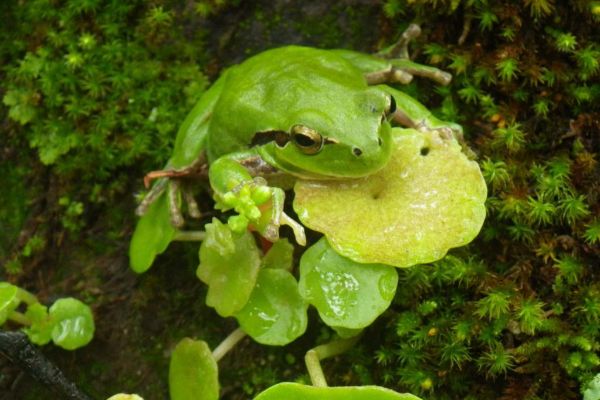- Biodiversity: the 'serial killer' who has put amphibians in check
- Species at risk: A lifeguard for amphibians
They have been on Earth 365 million years ago and have literally seen everything. But they still retain fine skin: any environmental problem, from pollution to drought, seems to affect them sooner and more than the rest. Their paradox is that, until now, they have endured all kinds of changes, but, also breathing through the skin and needing water points to reproduce, they are especially sensitive to those generated by humans.
The Sierra de Grazalema Natural Park, in Cádiz, also exhibits, like the amphibians that inhabit it, its own antiquity and its own paradox. He has resolutely resisted the passage of time, and even retains inside one of the few virgin forests that remain in Europe, in addition to a considerable and ancient population of pinsapos, a type of fir from the quaternary and today disappeared in almost all places of the world
It is also an ecological contradiction: nowhere in Spain does it rain more, but suffers from water deficiencies. The origin of the apparent nonsense is found in the characteristic porosity of the land, which filters most of the water. A situation accentuated in times of drought, such as that which has been suffered in the area in four of the last five years.
Given the foreseeable exacerbation of the problem due to global warming, amphibians appear, once again, as the first to suffer and, therefore, alert others to what is happening. They are, in the expression of the United States Geological Survey, " front-row seats for climate change ."
“Amphibians are excellent indicators of the quality of the environments where they are found,” he confirms from the Sierra de Grazalema, at the foot of a trough where several of these species breed, Víctor Jiménez, a member of O-Live. This environmental association has carried out, since 2017, the project Restoring water points, funded by the Banco Santander Foundation, with which 29 new places suitable for amphibian reproduction have been created and another 29 have been restored.
“Water points are very sensitive to pollution: everything that goes to the ground ends, in one way or another, in the water,” explains Álvaro de las Heras, from O-Live.
The water points where amphibians reproduce and develop their larval phase do not require large structures: any lagoon, a common pool, even a small fountain or the usual watering holes for cattle are sufficient. Of course, they must be properly enabled with ramps and access roads, so that amphibians can leave and do not end up in a "deadly trap ."
The benefit also goes in two directions, since the presence of amphibians is beneficial for water and, therefore, for the cattle that consume it. The reason is that "frog and toad larvae," recalls Jiménez, "feed on algae," so they control their excess and, in many cases, prevent water from becoming unusable .
More laborious than rehabilitation is the construction from scratch of water points, such as ponds or artificial lagoons. But also in this case there is a beneficial effect for various species, beyond amphibians. As soon as water is available, the birds and mammals in the area begin to approach and drink from it. And the vegetation thrives around the pond. What, in turn, is taken advantage of by amphibians, who live among bushes and bushes when, already adults, they come out at the end of the water.
The variety of breeding points responds to the different needs of the species that inhabit Grazalema: "Some types of amphibians are adapted to more artificial water points, such as the common frog," says De las Heras. "You also find salamanders in fountains, watering holes, pools ... in almost every place."
Other species, on the other hand, do not conform so easily: "There are much more specialists, such as the pintojo sapillo or the mottled toad, which prefer much more shallow water points: you will find them in smaller, shallow ponds." The salamander and the frog are the amphibians that most abound today in the points built or rehabilitated by the O-Live project.
But the loss of water points, which were traditionally used for livestock and agriculture and are now being abandoned, is only one of the problems that amphibians have encountered, both in Grazalema and in many other places.
"In the end, it's just a patch," concludes De las Heras. « The most important thing is education . Create awareness in local people, mainly farmers and ranchers, who are the agents in contact with the environment. Without your support, we have everything lost.
According to the criteria of The Trust Project
Know more- Science and Health
- science
Climate crisis: reproach Chile for how it is conducting the negotiation of the Climate Summit
Climate crisis Zero emissions: a commitment in the air
Climate crisis Brazil will ask for funds to preserve the Amazon at the Madrid Climate Summit

